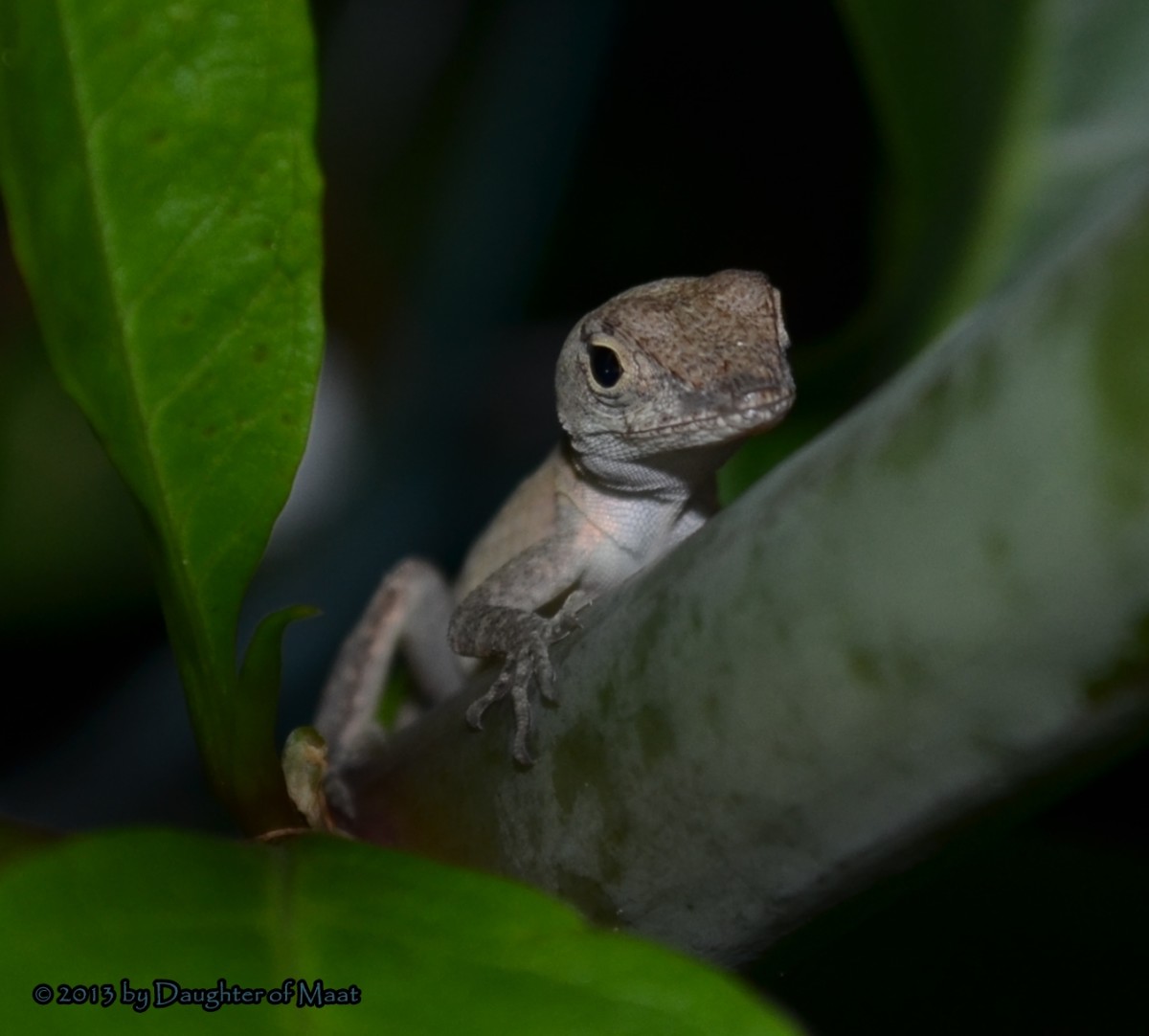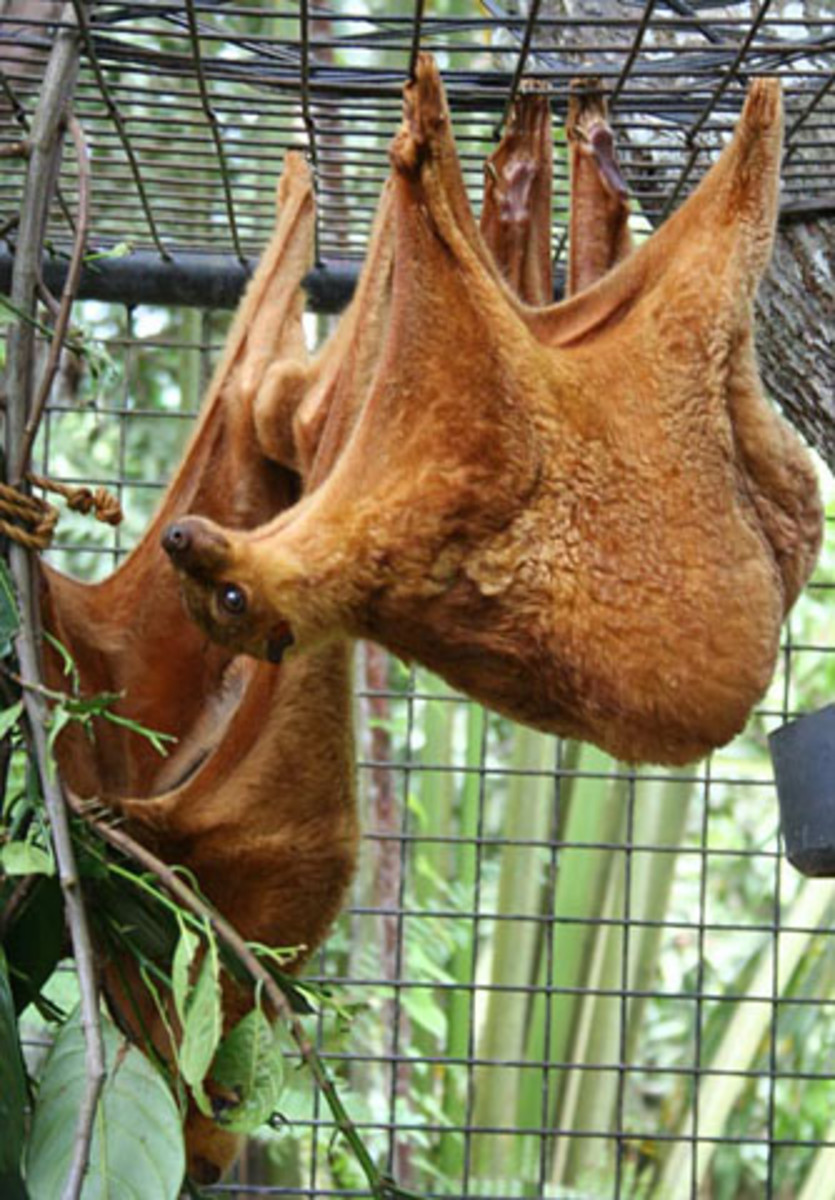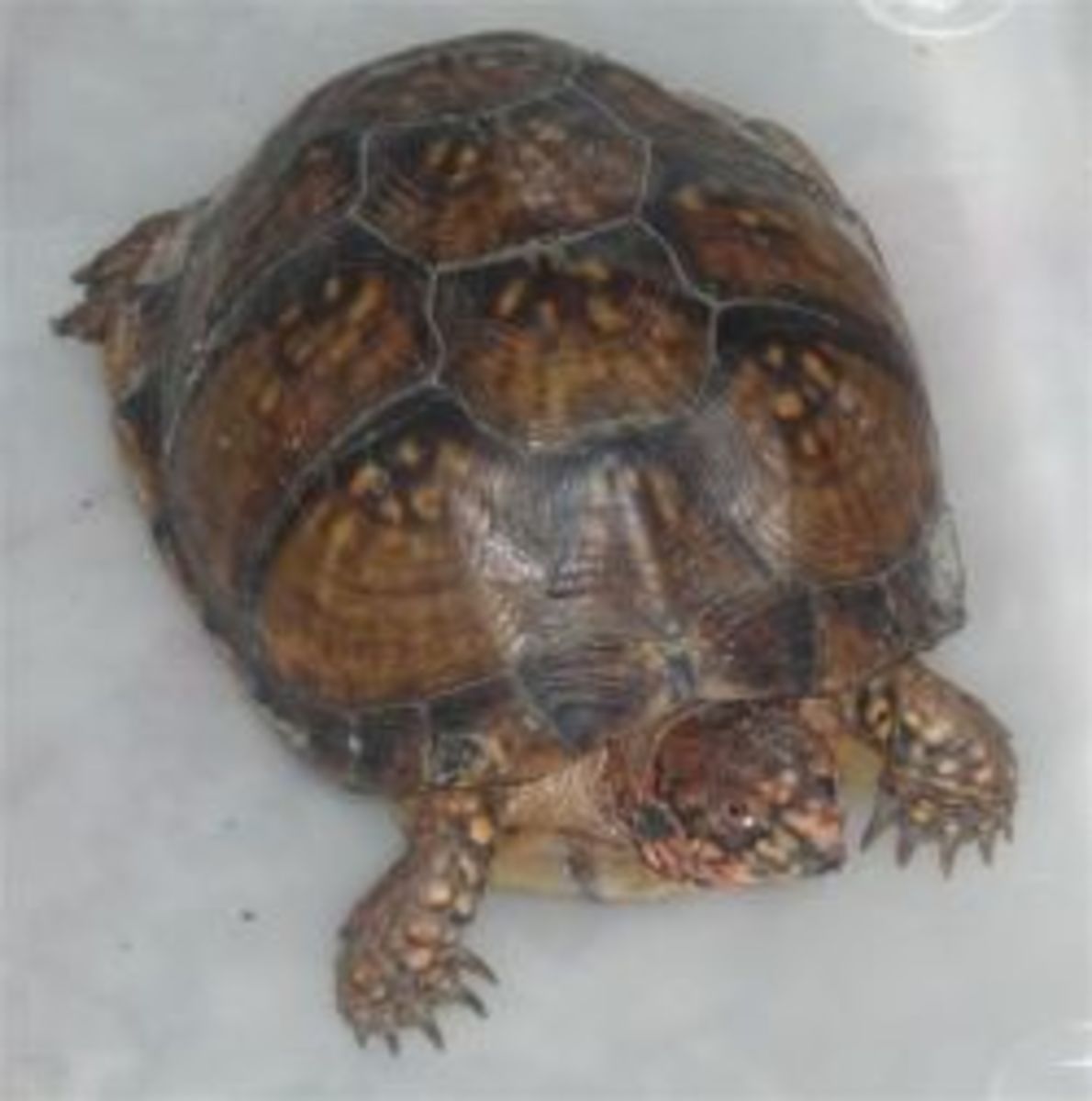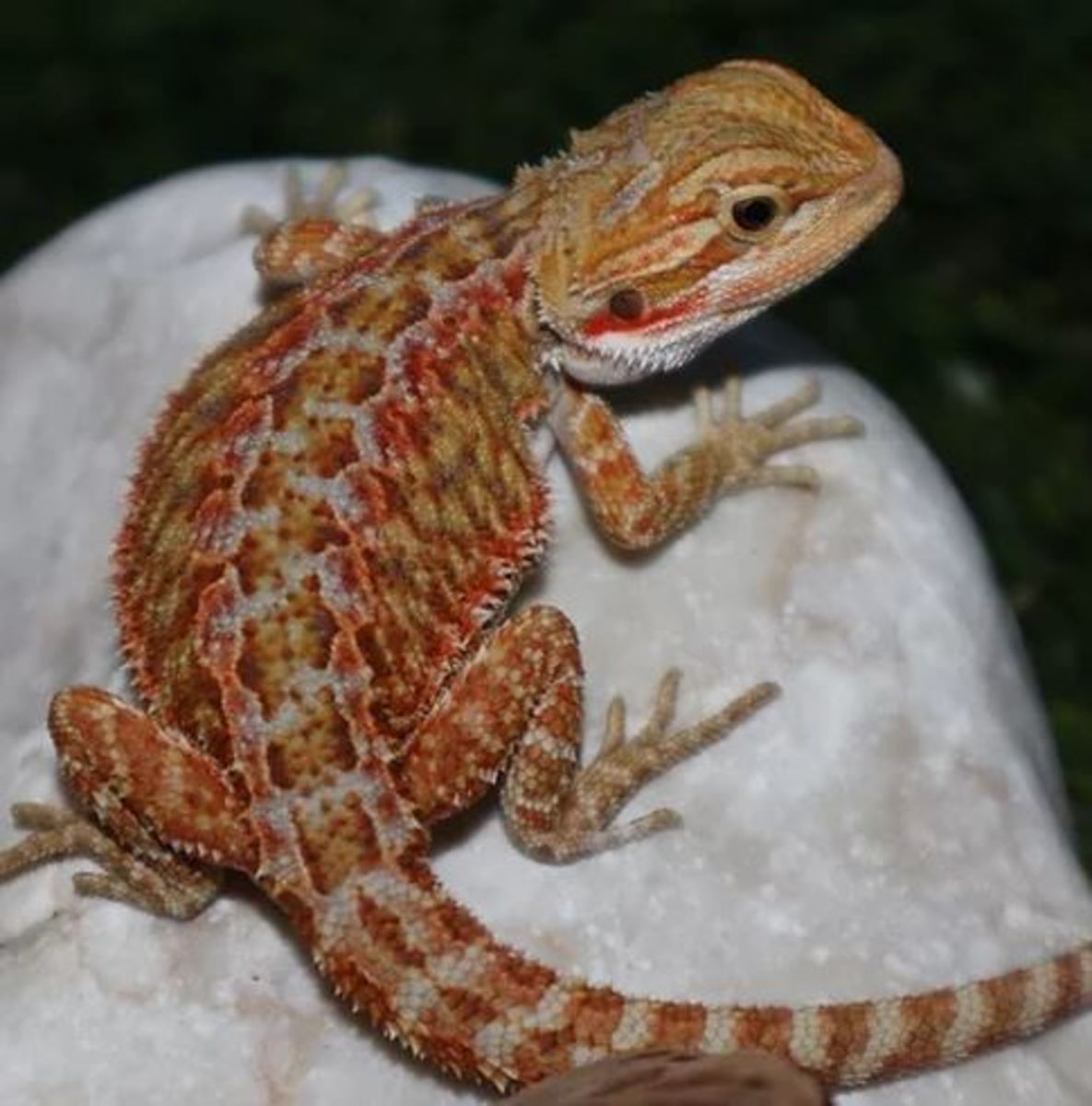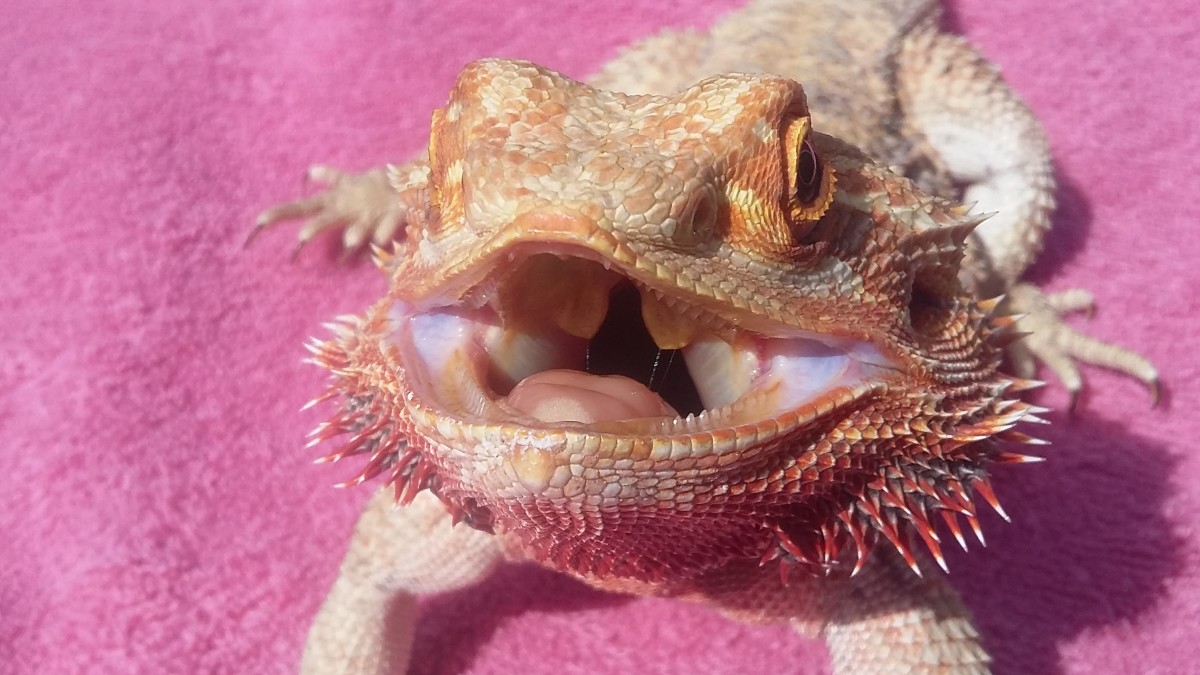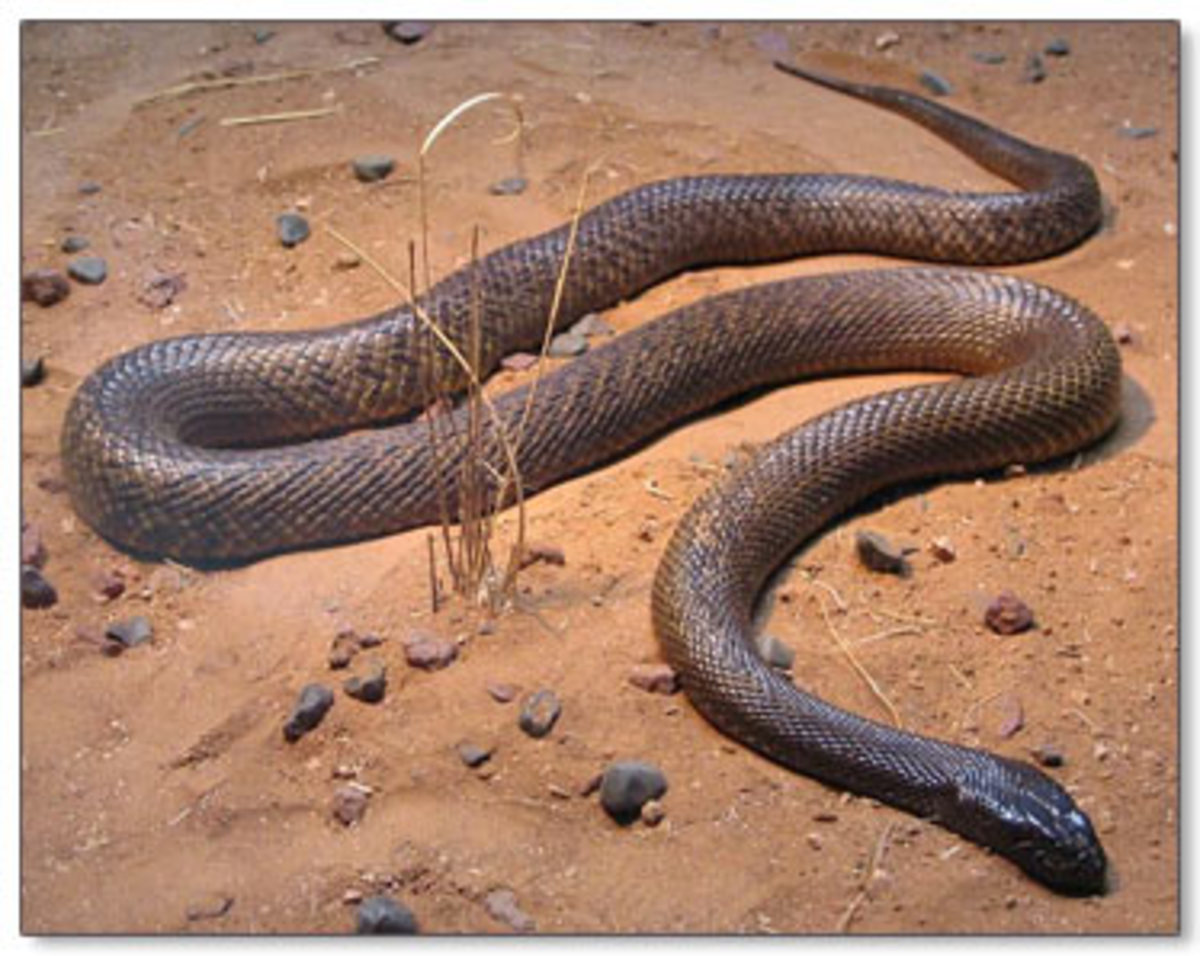Kemp's Ridley Sea Turtle in Louisiana
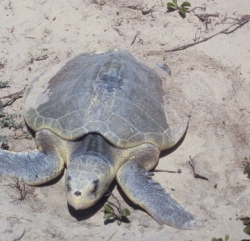
Reptile: Lepidochelys kempii
Kemp's Ridley Sea Turtles are the most critically endangered of all sea turtles and are currently on the Endangered Species list. These gentle reptiles are known to nest only along the coast of Mexico and recently, Texas. Besides having a limited nesting site, they encounter other dangers in the sea, from storms, pollution and from humans, who despite their endangered status, continue to rob their nests and kill them for meat. Most baby turtles don't live to reproduce.
But there is hope. Kemp's ridley turtles are making a comeback. Today, the original (and for years, the only) nesting site which is located on the coast of Mexico hosts about 8000 females each year and their numbers are growing. Even better news is the fact that since the establishment of another Kemp's Ridley nesting site in the mid 1970s, many new nests have been discovered along the coast of Texas around Padre Island. In both the original and the new sites, conservation methods and protection of the nests are bringing the numbers up.
The recent BP Horizon oil spill is threatening the habitat and nesting grounds of the Kemp's ridley and other endangered sea turtles. We pray that they close the leak quickly.
Kemp's Ridley Sea Turtles are Making a Comeback
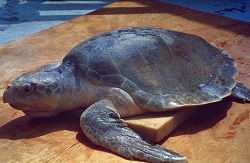
Oil Spill Threatens Kemp's Ridley and Other Endangered Sea Turtles
Dr. Andre Landry, Jr. of Texas A&M University's Sea Turtle and Fisheries Ecology Research Lab expressed great concern about the impact the Horizon BP oil spill would have on the Kemp's ridley and other endangered sea turtles.
He said, "We are entering the prime time within the ridley nesting season in which adult females will be in nearshore waters nesting three to four times every 14 to 21 days.".... "I am particularly concerned about potential damage to sea turtle assemblages that forage and nest along the Louisiana coast," he said, "especially within Breton Sound, the Chandeleur Islands and eastward toward other barrier island beaches and their wetland fringes that extend to the Florida Panhandle and areas such as Cedar Key."
Oil is also moving towards Florida beaches and will threaten the nesting sites and habitat of the loggerhead and green sea turtles.
After several failed attempts, BP Horizon has managed to get a pipe into the spewing well and is pumping about 1000 barrels a day into a storage vessel. This is a small percentage of what is escaping. Much more needs to be done to stop the leak.
Reference: Environment News Service: Endangered Sea Turtles at Risk from Gulf Oil Spill
Sea Turtle photo is public domain
Kemp's Ridley Sea Turtles Rescued from Oil Spill
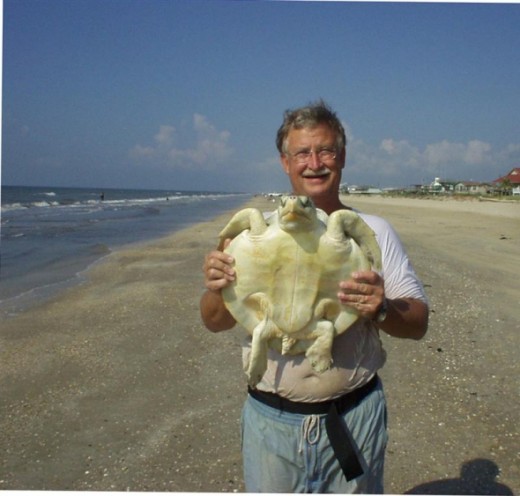
Kemp's Ridleys, similar to the one pictured here, were rescued from the oil slick.
Man holding sea turtle is a public domain photo. This particular sea turtle was accidentally hooked in the fin and was released after the brief photo op.
The first sea turtle which was rescued from the oil slick on May 18th, 2010 is a baby Kemp's ridley, measuring about 7 inches long and 6 1/2 inches across. Experts at the Aquarium of the Americas estimate its age at less than a year.
Blood tests were taken and it was thoroughly cleaned (even inside its mouth) with Dawn dish washing liquid. Latest reports say that it is doing well.
Since that first one, there have been hundreds of sea turtles rescued and a large number of them are Kemp's ridley.
For more about the rescue and rehabilitation see, Oil spill: First turtle rescued being scrubbed...
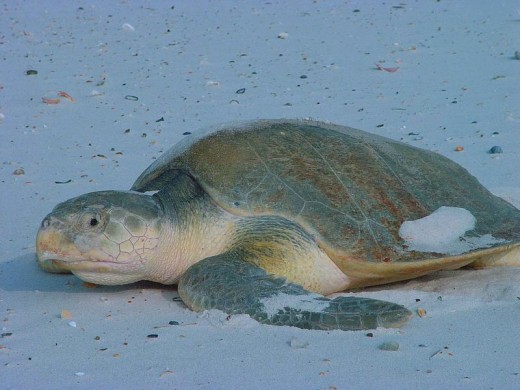
Description and Identification
The smallest of the Gulf Coast sea turtles, the Kemp's ridley, measures up to 27 inches and adults weigh about 100 pounds. Its shell (carapace) is almost round and ranges from gray to dark gray green in color. The Kemp's Ridley also lives in a small area and spends most of its life in the Gulf of Mexico, but will venture into the Caribbean and the Chesapeake Bay as juveniles.
Until the 1940s, the Kemp's ridley was not recognized as a distinct species. The olive ridley, a close relative and the loggerhead were often confused with the Kemp's. At one time, it was thought that the Kemp's ridley was a sterile cross between the Olive ridley and loggerhead.
The confusion continued until 1963, when an old film, taken by Mexican engineer, Andres Herrera in 1947 was rediscovered. This film showed about 40,000 Kemp's ridley females laying eggs on a beach in Mexico (now called Rancho Nuevo). Until recently this is where 95% of the Kemp's ridley turtles nested.
1947 Kemp's Ridley Sea Turtles Nesting - Andre Herrera's Lost Footage
Baby Kemp's Ridleys Sea Turtle
Nesting and Conservation
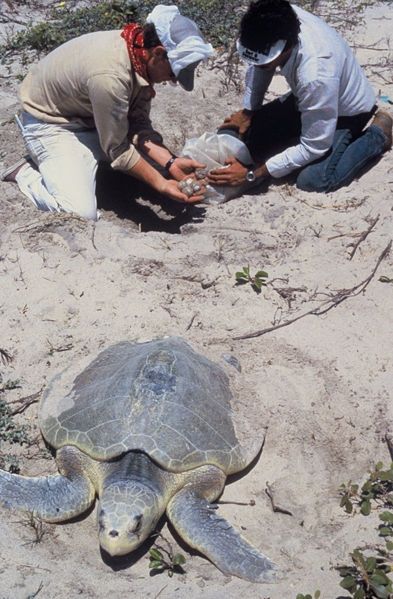
Padre Island Conservation Project of Kemp's Ridley Sea Turtle (public domain photo)
Kemp's ridley sea turtles nest on the same beach each year. The males and females gather out in the water to mate and the females wait until the conditions are just right before coming ashore in mass. Since they come ashore in daylight, good conditions include high northeast winds to cool the turtle and hide the evidence of the nest, and heavy surf. Scientists feel that the mass nesting may be a predator "swamping", with some females and nests being sacrificed, but more surviving. Each female lays about 100 eggs. The eggs incubate in the warm sand from six to twelve weeks.
For ten years, from 1978-1988, a project to increase nesting by Kemp's ridley sea turtles at Padre Island National Seashore was undertaken. The goal was to establish a second nesting site in Texas, to safeguard against extinction of the species. During that ten year period, 22,507 eggs were collected in Rancho Nuevo, then were packed in Padre Island sand and transported to the National Seashore. The eggs were hatched under controlled conditions and the hatchlings were released on the beach, allowed to crawl to the surf, then after a short swim in the Gulf of Mexico, were netted and transported to the National Marine Fisheries Service Laboratory in Galveston, Texas. Here they were reared for 9-11 months. After tagging, most of the turtles were released when they were one year old into the Gulf waters off Mustang and North Padre Islands.
Since 1986, scientists and volunteers have been finding and protecting the Kemp's ridley nests in Texas. Today, some of the eggs are brought to the National Seashore for protected care. Ones found in South Padre are hatched in a large corral. The hatchlings are allowed to go naturally into the Gulf of Mexico.
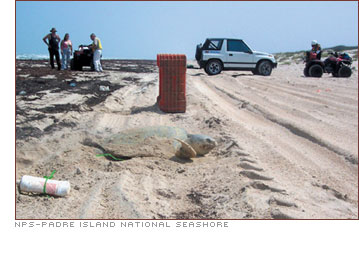
Padre Island Kemp's Ridley SeaTurtle Spotters (public domain photo)
According to Texas Sea Turtle Nesting Report (which reports nests since 2006) other Kemp's ridley nesting sites were found all along the Texas coast. Some of the nesting sites in 2009 were:
Bolivar Peninsula 1
Galveston Island 3
Brazoria County, north of Surfside 3
Surfside Beach 0
Quintana Beach 1
Bryan Beach 2
San Bernard Wildlife Refuge 1
Sargent Beach 1
Matagorda Peninsula 3
Matagorda Island 7
San Jose Island 4
Mustang Island 2
Corpus Christi Bay 1
North Padre Island 116, including 109 at Padre Island National Seashore
South Padre Island 27
Boca Chica Beach 9
In 2009 there were 197 nests protected on Padre Island, resulting in 17,518 eggs and 14,506 hatchlings were released. Eleven more nests were left to incubate on the beach. Nearly half of those were predated upon so it is not known how many hatchlings successfully entered the Gulf from those 11 nests.
Range Map
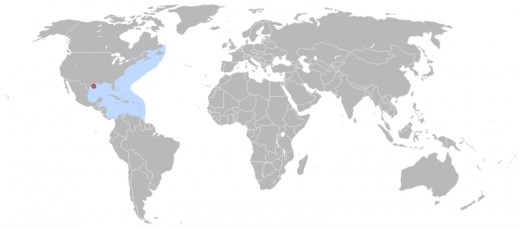
Map showing nesting site and range of Kemp's Ridley Sea Turtle
Female Nesting
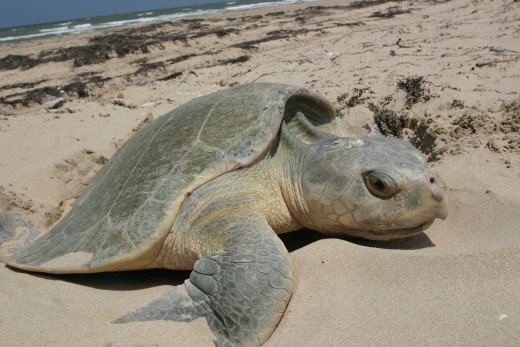
Interrupted Journey Book
Anyone who loves turtles, especially sea turtles, will enjoy this well illustrated and informative book.
Rancho Nuevo
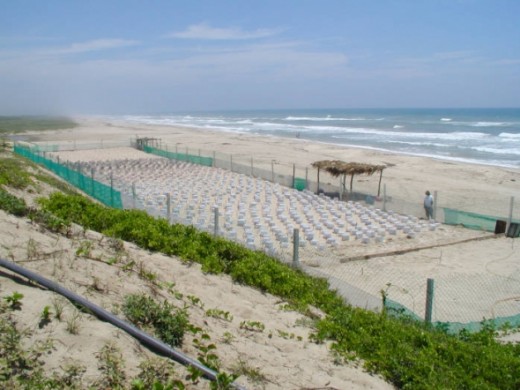
The corrals at Rancho Nuevo, where the Kemp's ridley nests are kept safe from predators.
Photo is public domain
Juveniles are often seen during the summer in the Chesapeake Bay. It is an important feeding area. Sometimes juveniles stay in the northern Chesapeake Bay too long into fall and cold snaps catch them unaware. The book, Interrupted Journey Saving Endangered Sea Turtles, tells the story of one such sea turtle, named Blue and Yellow, and his rescue and journey from Cape Cod to his release in the warm waters of Florida.
This well written and illustrated book also relates the story of the original Kemp's Ridley nesting site in Mexico. Over sixty years ago, 40,000 sea turtles would lay 4 million eggs on this beach, but by 1974 the numbers of returning females was down to only 2,500 Kemp's ridley turtles. Numbers decreased during the next few years to only one thousand and then to only five hundred. In 1977, the Mexican government declared Rancho Nuevo a Natural Reserve. In 2009, due to conservation programs in Mexico, the number of returning Kemp's ridley females has risen to about 8000. The number of nests at Rancho Nuevo and adjacent beaches was more than 20,000.
On the reserve at Rancho Nuevo, volunteers locate as many of the turtle nests as they can find and transport the 100 or so eggs from each to the safe "corrals" on the main beach of Rancho Nuevo. Each nest is marked and is covered with a wire cylinder and a plastic bag. The corrals are covered with a fine mesh cloth to protect them from predators, when the eggs near the end of the six to twelve weeks of incubation.
Lagniappe, Louisiana's 1st Satellite Tagged Kemp's Ridley Turtle
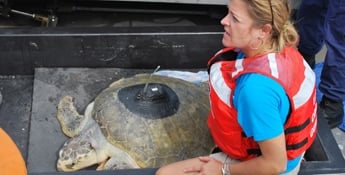
Here in Louisiana, we have our own story of a rescued female Kemp's ridley sea turtle, named Lagniappe (which means a boon or something extra). Lagniappe, the Kemp's ridley sea turtle, had been swept into an inland pond by Hurricane Ike, in the fall of 2008.
A truck driver reported seeing a sea turtle trapped in an inland borrow pit pond in southern Vermillion Parish. This report put the wheels in motion which launched a collaborative effort between the LA Department of Wildlife and Fisheries (LDWF), the Louisiana Marine Mammal and Sea Turtle Rescue Program (LMMSTRP) and the Audubon's Aquarium of the Americas (AAoA) to plan and ultimately rescue the rare turtle from what would have been a slow death.
Lagniappe, a large adult female Kemp's Ridley spent most of 2009 recovering at the Aquarium of the Americas. When rescued, she weighed in at 90 pounds and was 2 feet 8 inches long with a shell diameter of 2 feet 2 inches. Since Kemp's ridley sea turtles are the most critically endangered of all sea turtles and are currently on the Endangered Species list, the team was very excited to successfully rescue Lagniappe. She was released in October of 2009, complete with Louisiana's first satellite transmitter tag cemented to her shell.
Lagniappe has Louisiana's first Satellite Tracking Transmitter
The satellite tag / transmitter's battery lasted for about 255 days. Lagniappe's transmitter is no longer functioning. On the Tracking site you'll find the "tracks" of other sea turtles that have been tagged with satellite transmitters.
Reference: Adam Einck, "Lagniappe's Release", Louisiana Conservationist, Winter 2010
Lagniappe, LA Rescued Kemp's Ridley Sea Turtle Release
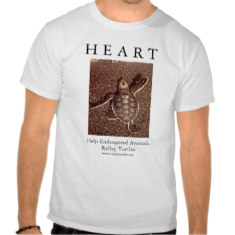
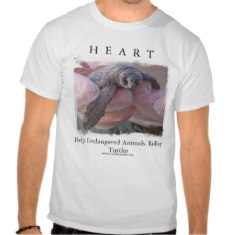
Support the Kemp's Ridley Cause
Check out Kemp's Ridley products on Zazzle
Many Shirts and other items sporting the Kemp's Ridley image are available for purchase.
Sea Turtles - Jeff Ripple
Great photos and information about most of the endangered sea turtles including breeding, habits, description and conservation efforts.







